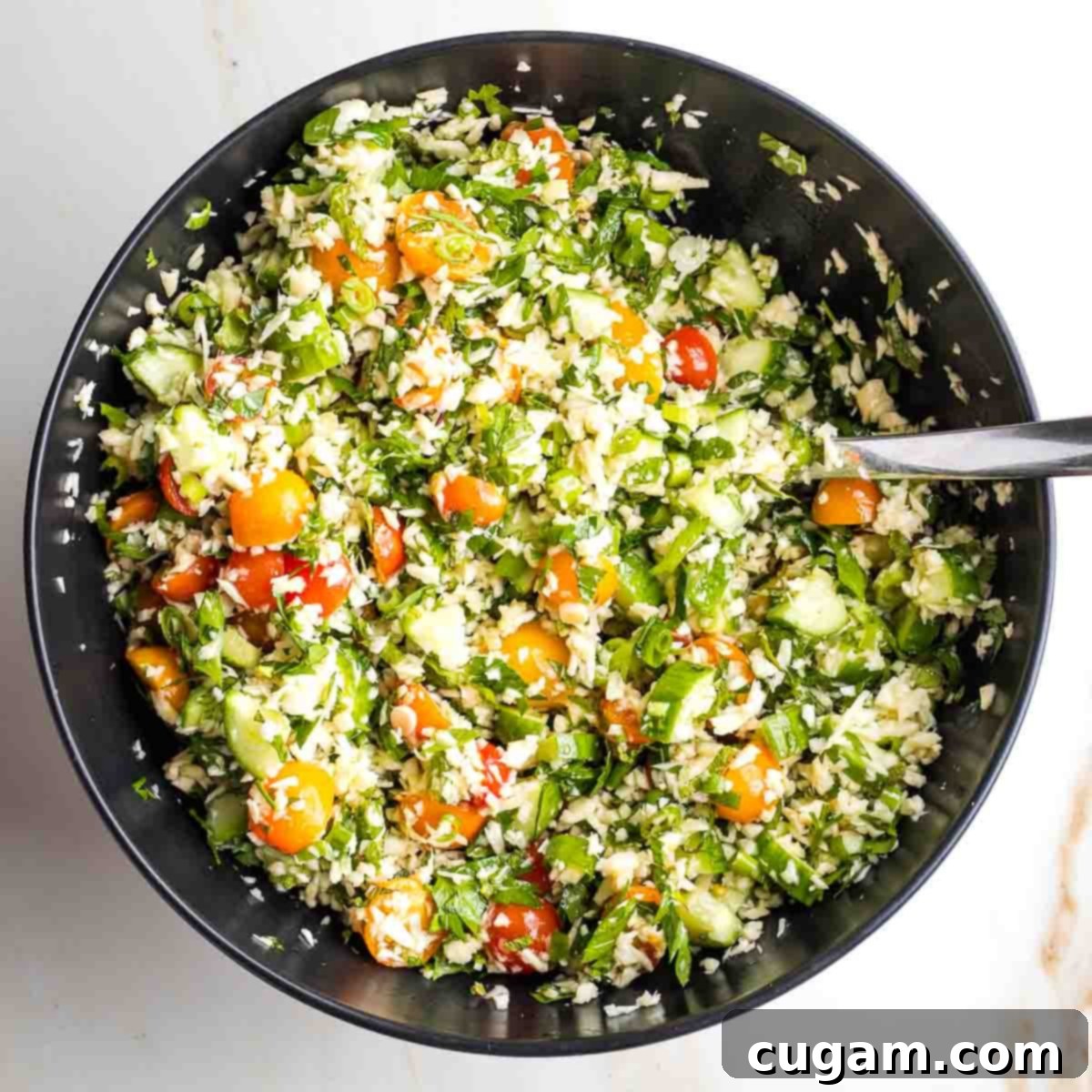Delicious Gluten-Free Tabbouleh Salad with Riced Parsnips: A Healthy & Flavorful Twist
Step into a world of vibrant flavors and wholesome goodness with this incredible Gluten-Free Tabbouleh Salad. This isn’t just any tabbouleh; it’s a refreshing, light, and deeply satisfying take on a classic Mediterranean recipe, featuring an ingenious secret ingredient: riced parsnips. Forget the bulgur wheat, and embrace the nutty, slightly sweet crunch of parsnips, perfectly complemented by juicy tomatoes, crisp cucumbers, fresh scallions, and an abundance of aromatic herbs.
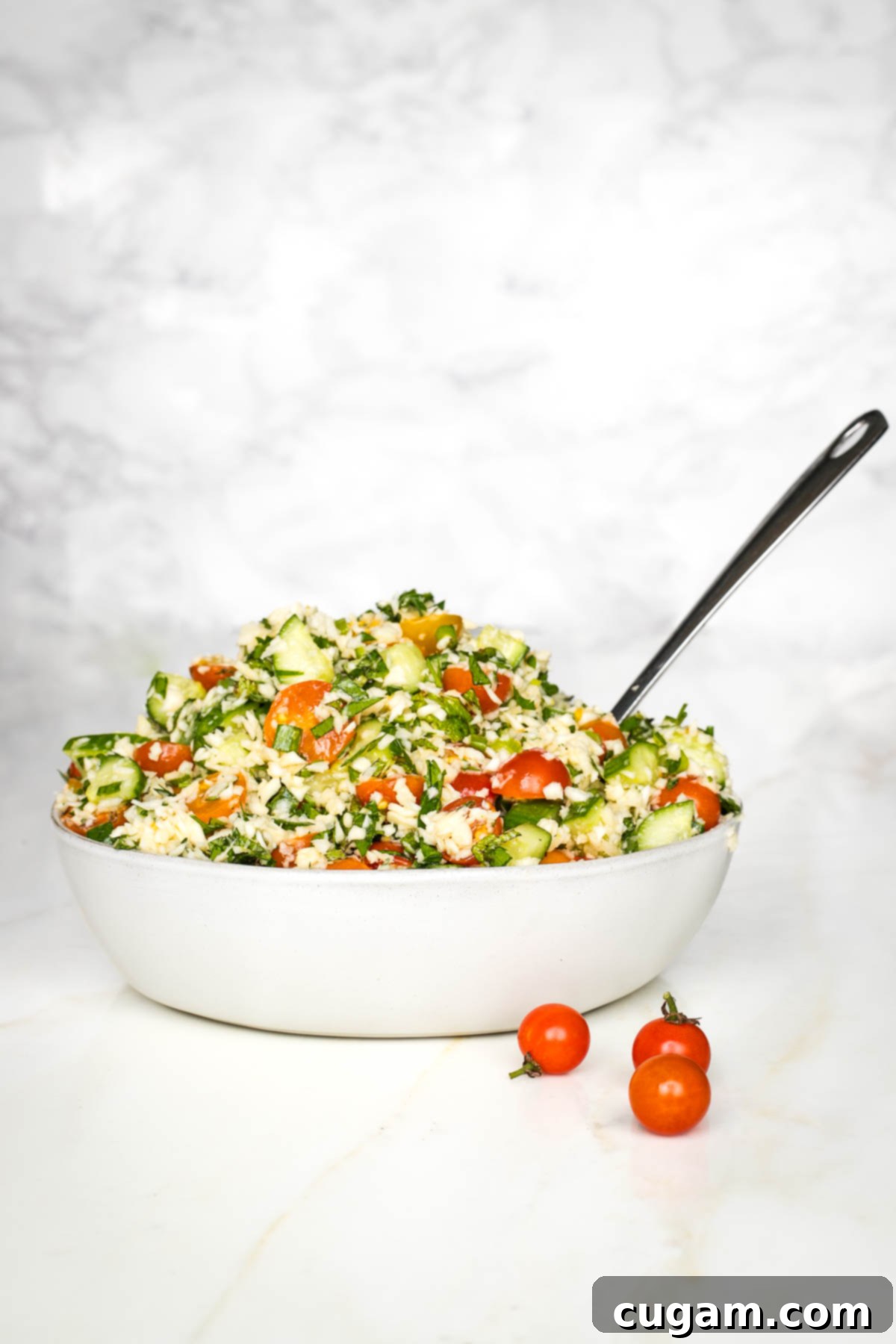
This post has been updated from the original posted on April 27, 2016.
[feast_advanced_jump_to]
The Secret Ingredient: Riced Parsnips for a Grain-Free Tabbouleh
A beloved Middle Eastern dish is given a modern, health-conscious twist with a star ingredient that will truly surprise and delight your palate! The secret? Finely “riced” parsnips ingeniously step in for the traditional bulgur wheat grains typically found in tabbouleh recipes. This simple substitution not only makes this version completely gluten-free and grain-free but also adds a unique earthy flavor, satisfying crunch, and a significant boost of nutrition.
Parsnips, with their mild, slightly sweet, and nutty profile, mimic the texture of bulgur perfectly when pulsed in a food processor. They absorb the zesty lemon-herb dressing beautifully, creating a harmonious blend of flavors. This innovative approach ensures that those following a gluten-free or low-carb diet can still enjoy the fresh, vibrant experience of tabbouleh without compromise.
Elevate Your Meal: Serving Suggestions for This Versatile Salad
This delightful parsnip tabbouleh salad is incredibly versatile. It shines as a standalone healthy side dish, but it can also be the centerpiece of an extraordinary meal. Imagine it as part of a vibrant vegan mezze platter alongside other Mediterranean favorites:
- Tofu Shawarma: For a hearty, protein-packed main.
- Baba Ghanoush: Creamy, smoky eggplant dip that complements the fresh salad.
- Cauliflower Hummus: A lighter, low-carb alternative to traditional hummus.
- Healthy Baked Falafel: Crispy and flavorful, a perfect addition.
Serve with warm pita bread for dipping or crisp romaine lettuce leaves for a lighter, wrap-style option. This combination creates a complete plant-based meal, rich in flavor, texture, and all the essential nutrients you need.
Why You’ll Love This Gluten-Free Parsnip Tabbouleh Salad
- Bursting with Fresh Flavors: The combination of ripe tomatoes, vibrant parsley, refreshing mint, and zesty lemon creates an explosion of fresh, bright taste that is utterly invigorating. It’s a truly winning flavor profile that will awaken your taste buds.
- Incredibly Easy to Make: Simplicity is key! There’s no need to fuss with a separate salad dressing. The fresh lemon juice and a generous drizzle of quality olive oil naturally dress the salad, making prep quick and effortless. Just chop, mix, and enjoy!
- Perfect for Meal Prep: This salad is one of those rare dishes that actually tastes *better* the next day. As it sits, the flavors meld and deepen, allowing the parsnips to fully absorb the herbaceous dressing. It’s ideal for preparing ahead for healthy lunches or dinners throughout the week.
- Wholesome & Healthy: Packed with fresh vegetables and nutrient-dense parsnips, this salad is a powerhouse of vitamins, minerals, and fiber. It’s a fantastic healthy side dish, or you can easily transform it into a complete plant-based meal by adding chickpeas, lentils, or nuts for extra protein.
- Naturally Gluten-Free & Grain-Free: By using riced parsnips, this recipe offers a delicious alternative to traditional bulgur-based tabbouleh, catering perfectly to gluten-free diets, those looking for low-carb options, or anyone simply wanting to incorporate more diverse vegetables into their meals.
Looking for more Healthy Passover Recipes? Discover new and exciting ways to enjoy Kosher for Passover Recipeswhile maintaining a balanced diet with Vegetarian and Vegan Recipes for Passover.
Main Ingredients and Essential Substitutions
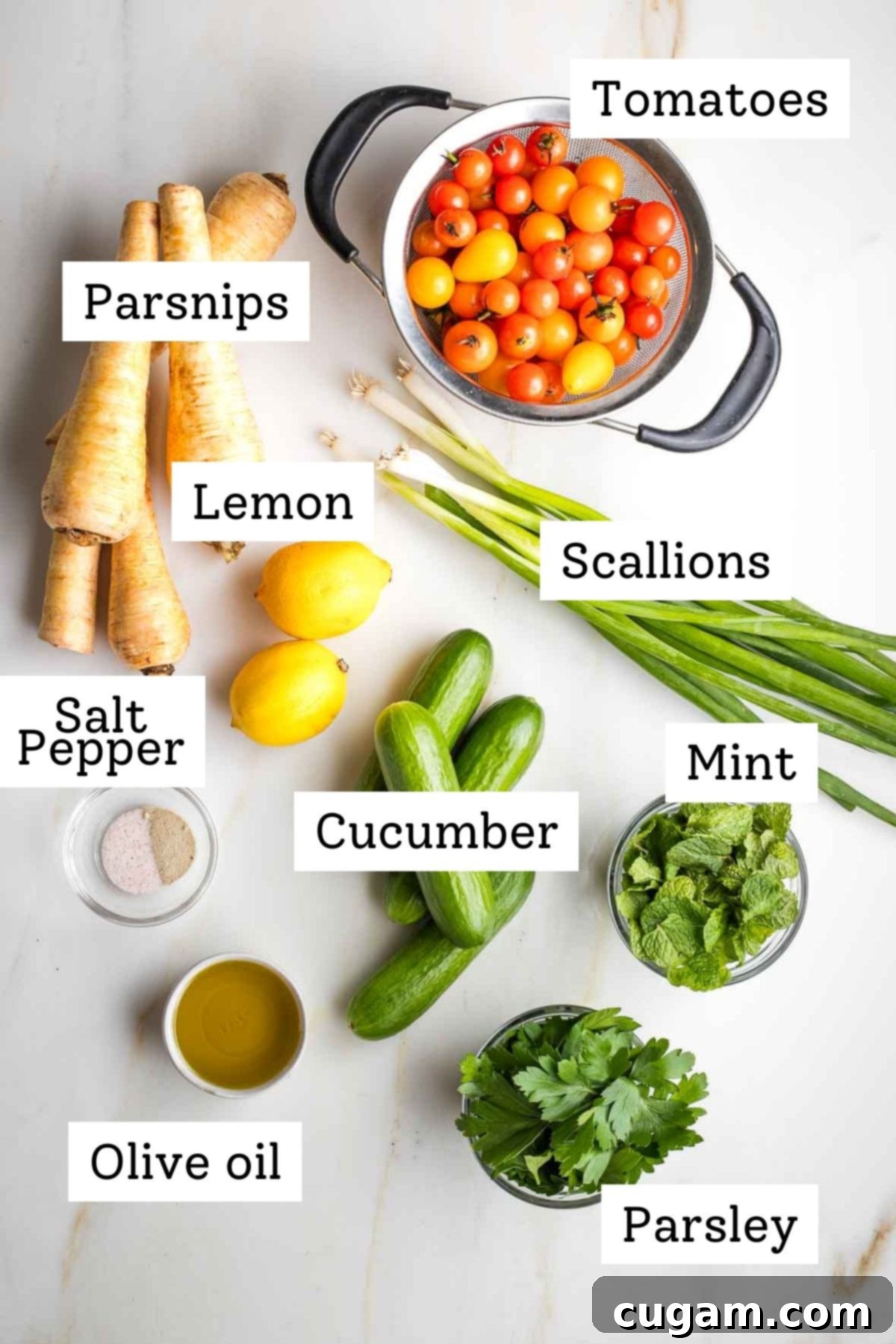
- Parsnips: The star of our grain-free show! Parsnips offer a wonderful nutty, slightly sweet flavor and a firm texture that is easy to pulse into grain-like pieces in a food processor. They are an excellent low-carb, high-fiber alternative to bulgur wheat. If parsnips aren’t available or you prefer another option, you could easily substitute with cauliflower rice or pre-cooked and cooled quinoa for a similarly nutritious and delicious gluten-free base.
- Tomatoes: Small, sweet tomatoes are the ideal choice here. Think cherry tomatoes, grape tomatoes, or pear tomatoes. Their vibrant colors and burst of sweetness add both visual appeal and a refreshing juiciness. Feel free to use a mix of colors for an even more inviting salad. For larger tomatoes, simply chop them into bite-sized pieces.
- Scallions: Also known as spring onions or green onions, these provide a mild, fresh onion flavor without being overpowering. Their delicate bite is perfect for this salad. If you’re a fan of a bolder flavor, a finely diced red onion could be a suitable substitute, just be sure to dice it very small.
- Cucumber: Essential for that signature crisp and refreshing element. I prefer using small Persian cucumbers for their thin skin and minimal seeds, or English cucumbers which are also excellent. The most important thing is to choose a firm, fresh cucumber that will hold its crunch.
- Fresh Parsley: This herb is non-negotiable for authentic tabbouleh flavor! While curly parsley is traditionally used, I find flat-leaf parsley (also known as Italian parsley) offers a more robust and fresh flavor. Don’t be shy with the parsley – it’s crucial for the vibrant taste and beautiful green color of this salad.
- Fresh Mint: The cooling, aromatic notes of fresh mint leaves are what truly elevate tabbouleh. Its invigorating essence pairs perfectly with the other fresh ingredients, adding a layer of complexity and brightness. Use fresh mint for the best results; dried mint will not deliver the same impact.
- Lemon: Fresh lemon is the heart of the dressing. You’ll want to use both the zest and the juice. The zest provides intense citrusy aroma and essential oils, while the juice offers bright acidity that balances all the flavors and “cooks” the herbs.
- Olive Oil: A good quality extra virgin olive oil is key for both flavor and nutrition. The healthy monounsaturated fats found in olive oil aid in the absorption of fat-soluble vitamins present in the fresh herbs and vegetables, making this salad even more beneficial.
The Power of Parsnips: More Healthy Parsnip Recipes and Benefits
Parsnips are a nutritional powerhouse, rich in vitamin C, potassium, and dietary fiber. They boast anti-inflammatory properties and can contribute to stabilizing blood pressure. While they sometimes get a reputation for being higher in carbohydrates than some other vegetables, they are still relatively low in calories and their high fiber content is excellent for digestive health and helps with blood sugar regulation. Don’t let their humble appearance fool you; parsnips are a versatile and beneficial addition to any healthy diet. Exploring various ways to prepare them, from roasting to mashing, can unlock their full potential.
- Honey Roasted Carrots and Parsnips
- Dairy-free Garlic Mashed Potatoes
- Parsnip and Kale Soup
- Homemade Vegetable Broth Recipe
How to Make This Easy Gluten-Free Tabbouleh
Crafting this vibrant gluten-free tabbouleh is surprisingly simple, primarily involving fresh chopping and a quick pulse in a food processor. With just a few essential kitchen tools, you’ll have this delicious salad ready in no time. A sharp chef’s knife and a sturdy wooden cutting board will make quick work of preparing your fresh vegetables. The key tool for achieving the perfect “riced” parsnip texture is a food processor. If you don’t have one, don’t worry! You can easily use pre-riced cauliflower, often found in the produce or frozen section of most grocery stores.
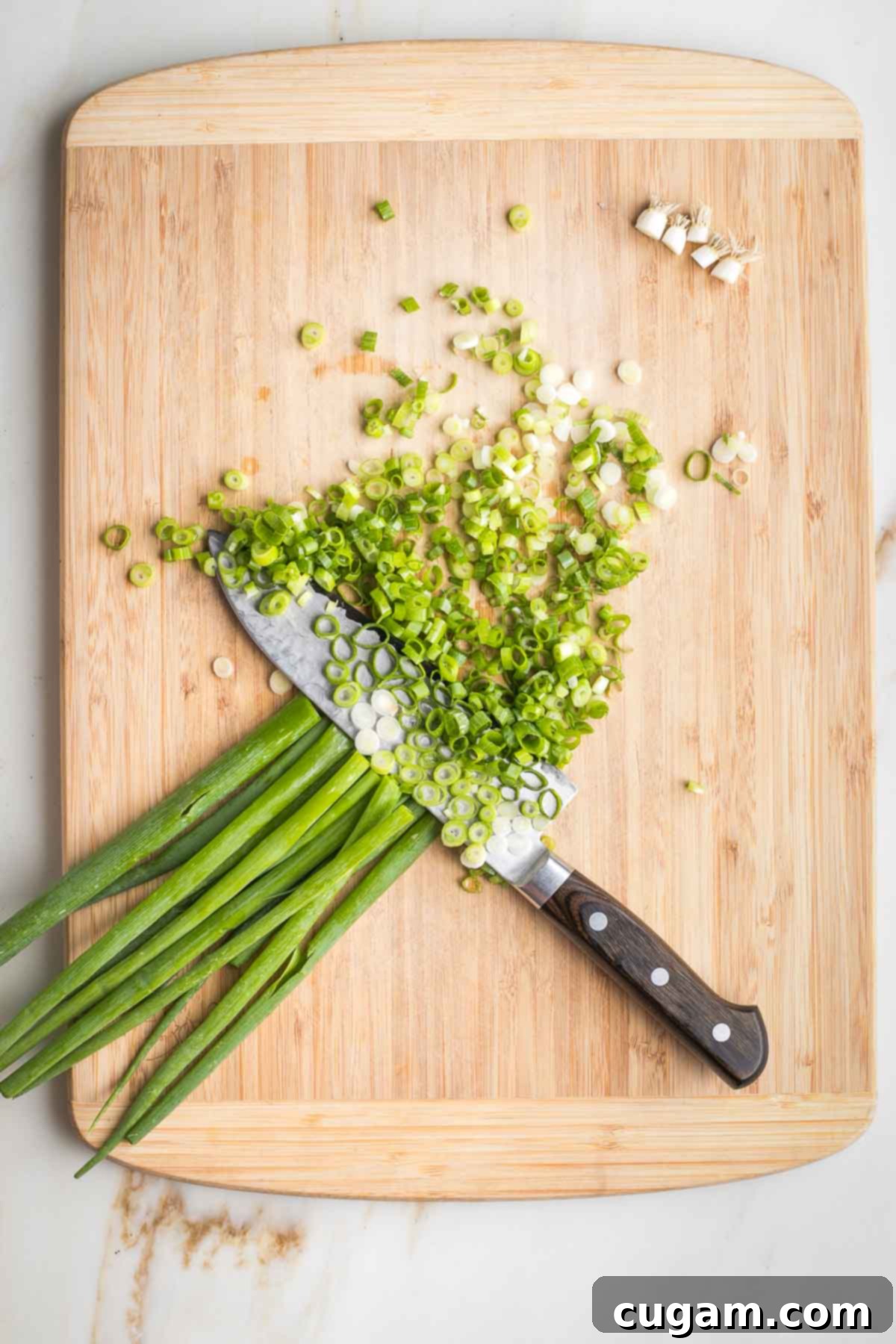
1. Prepare the Scallions: Begin by thoroughly cleaning the scallions under running water, removing any dirt or debris. Trim off the root ends and then thinly slice both the white and green parts. Set these aside in a small bowl while you prepare the other ingredients.
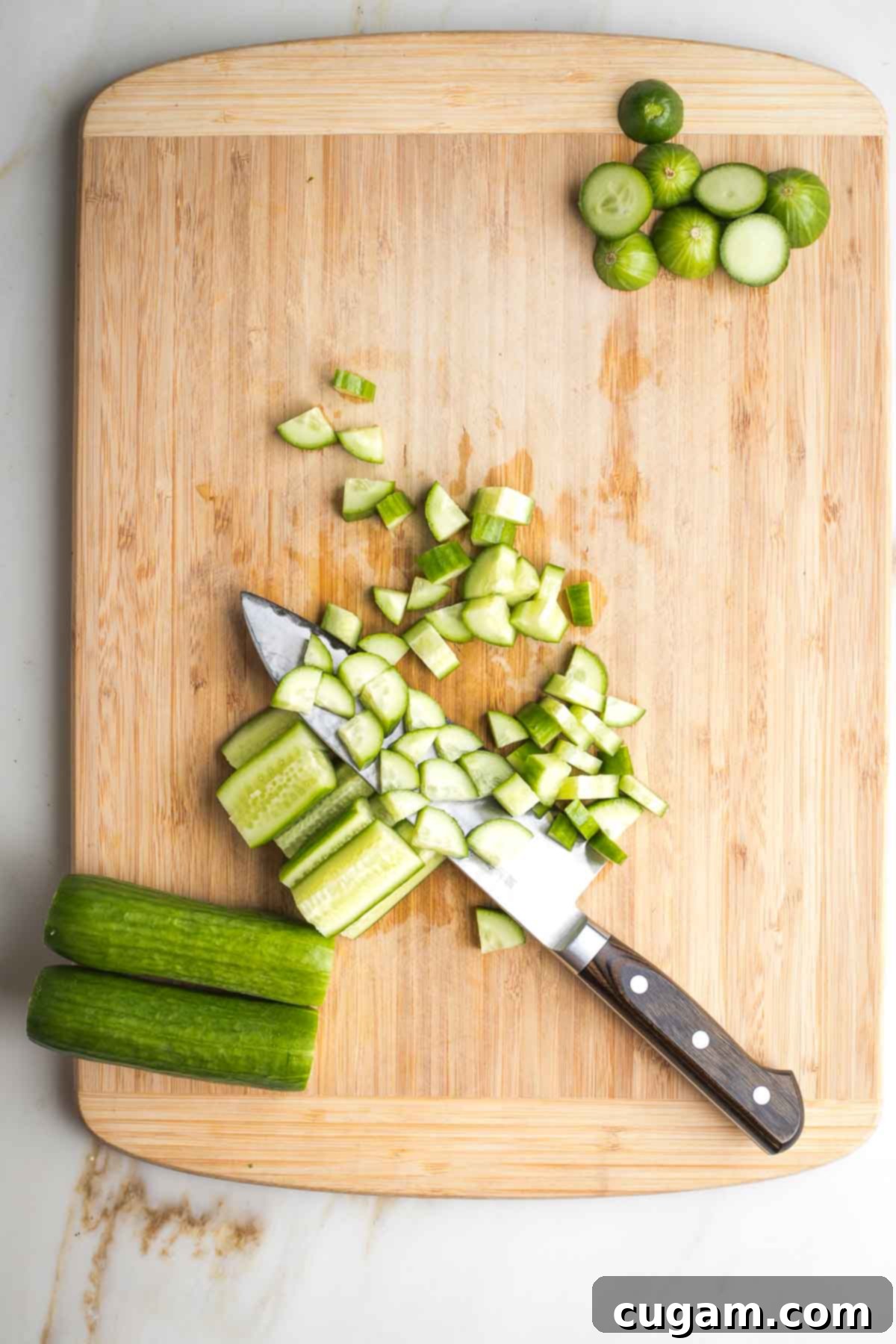
2. Dice the Cucumbers: Wash your cucumbers and trim off both ends. For a consistent texture in your tabbouleh, slice the cucumbers lengthwise into quarters. Then, chop these long strips into small, uniform ¼-inch pieces. Place the diced cucumbers in a separate small bowl.
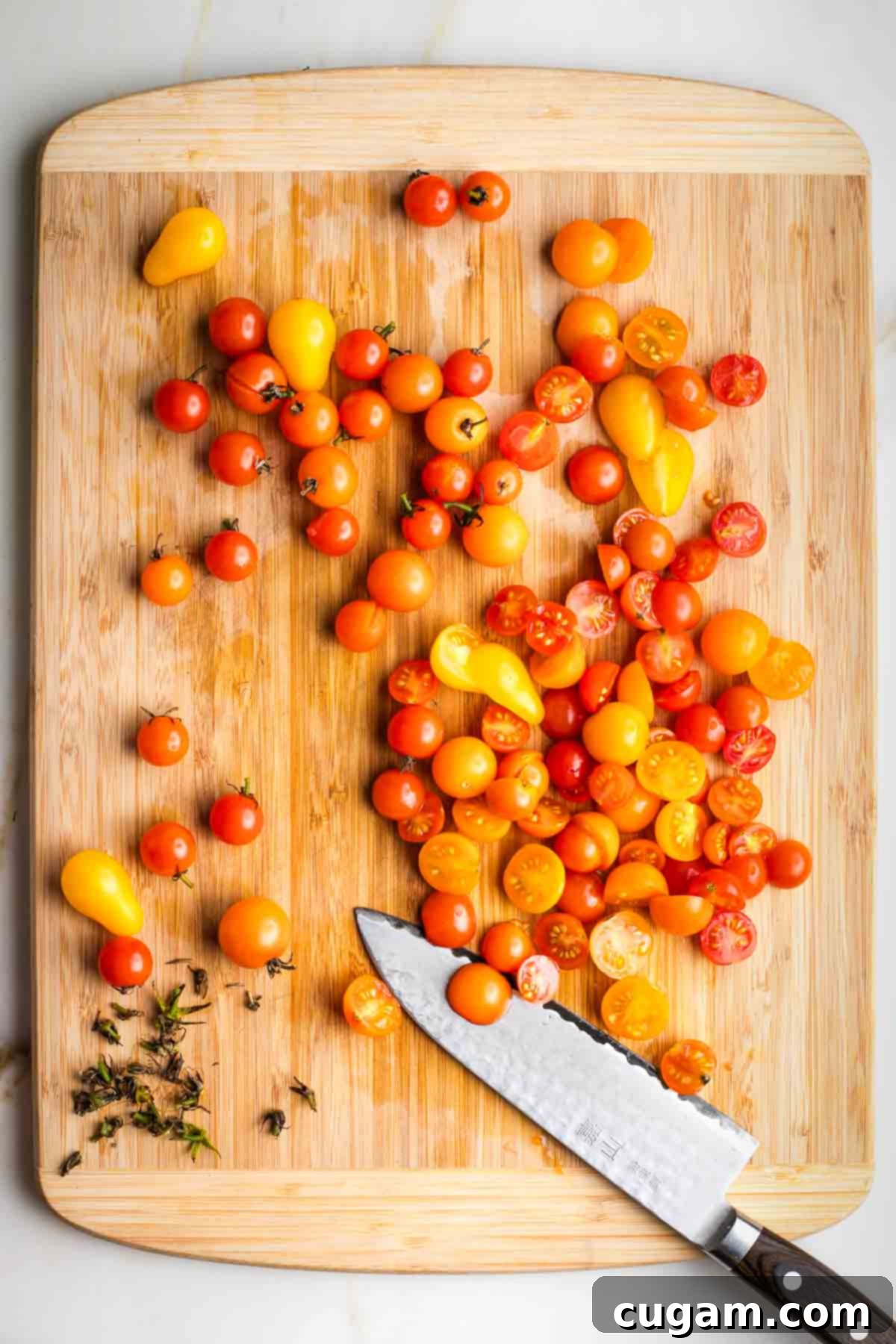
3. Halve the Tomatoes: Gently remove the stems from your cherry or grape tomatoes. Cut each tomato in half lengthwise. If you are using larger tomatoes, make sure to cut them into small, bite-sized pieces that will integrate well into the salad.
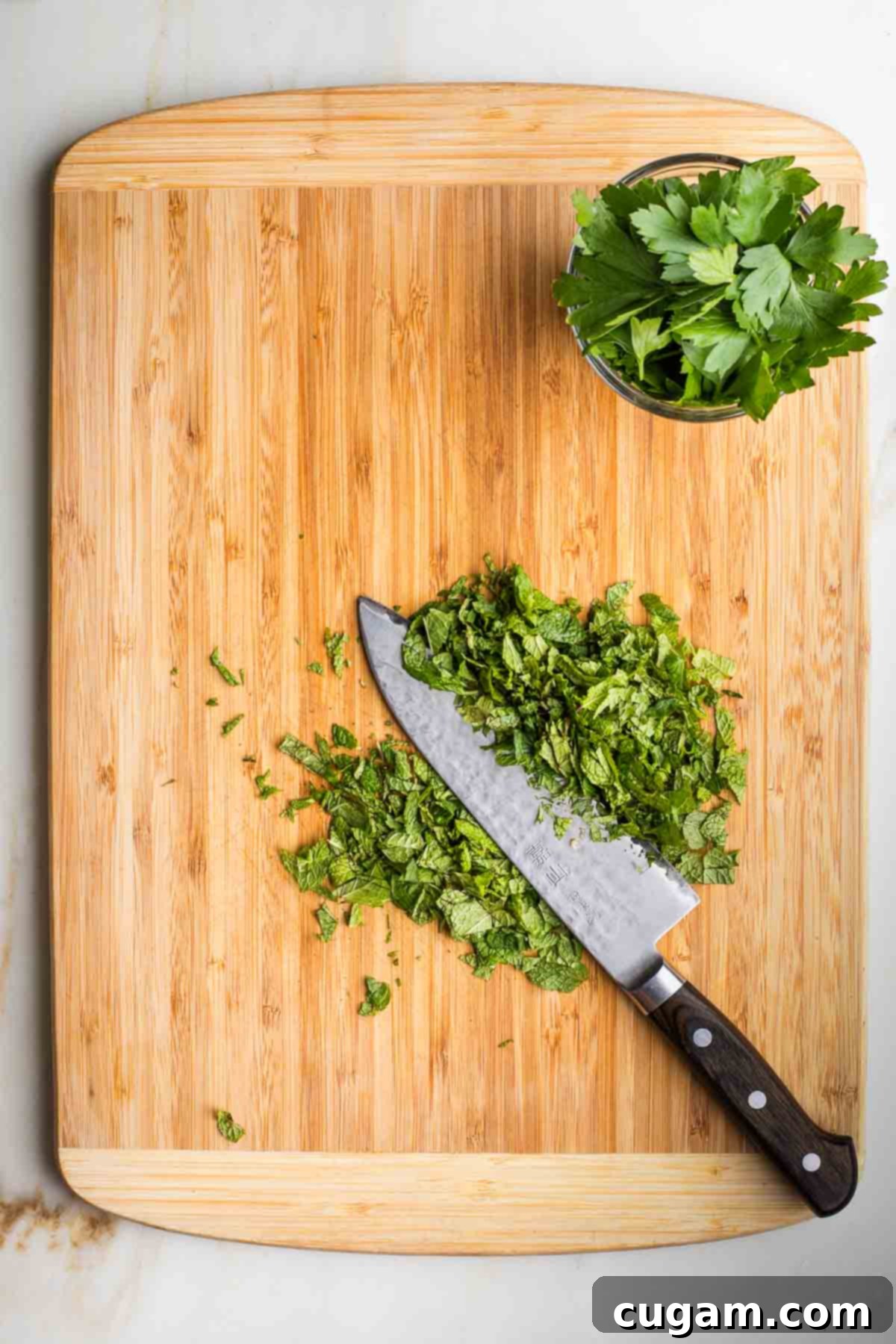
4. Chop the Fresh Herbs: For the mint, stack the leaves together tightly and then thinly slice them into a fine chiffonade. Discard any tough stems from the parsley, then gather the leaves and chop them finely. The finer the chop, the better the herbs will distribute their flavor throughout the salad.
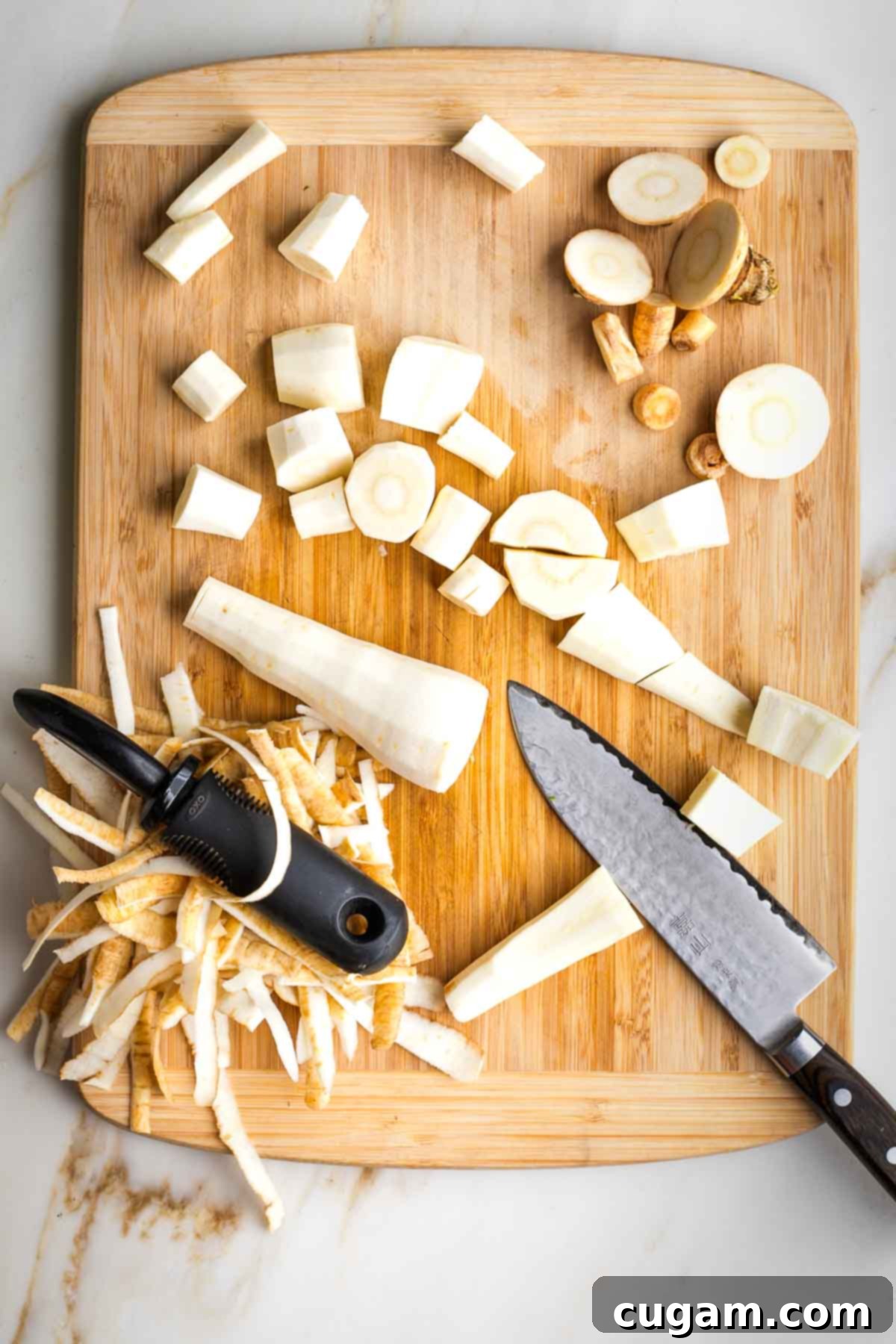
5. Prepare the Parsnips: First, trim both ends of the parsnips and peel away the outer skin. Then, cut the peeled parsnips into approximately 2-inch chunks. This size is ideal for fitting into your food processor and ensuring even processing.

6. Rice the Parsnips: Place the parsnip chunks into the bowl of your food processor, ensuring it’s fitted with the “S” blade. Pulse the parsnips in short bursts. Be careful not to over-process them into a paste; you want tiny, distinct pieces that resemble grains of bulgur wheat. You might need to do this in batches.
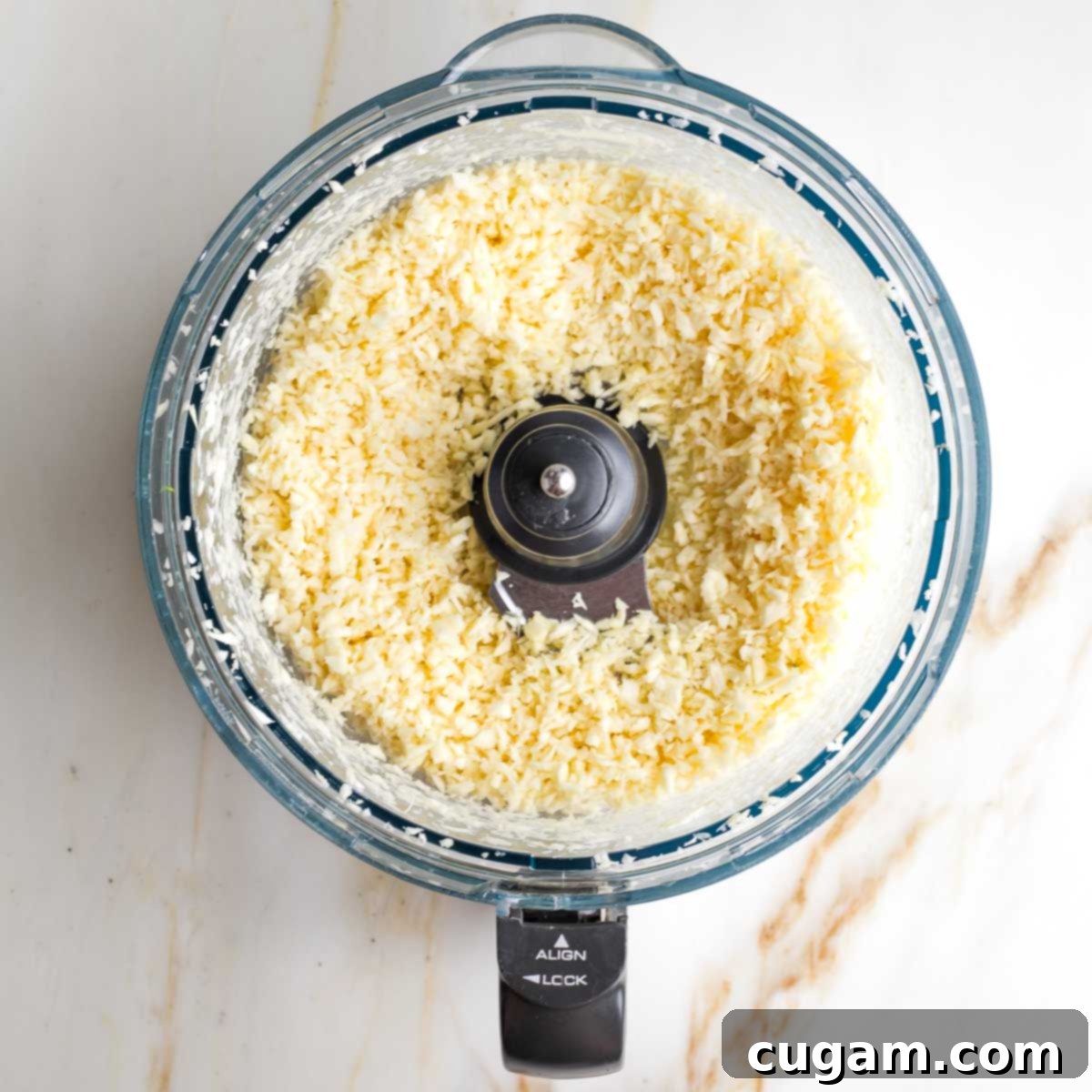
Once processed, the parsnips should have a texture that’s small enough to resemble cooked grains. This “riced” texture is perfect for mimicking the bulgur in traditional tabbouleh, providing a satisfying base for your salad.
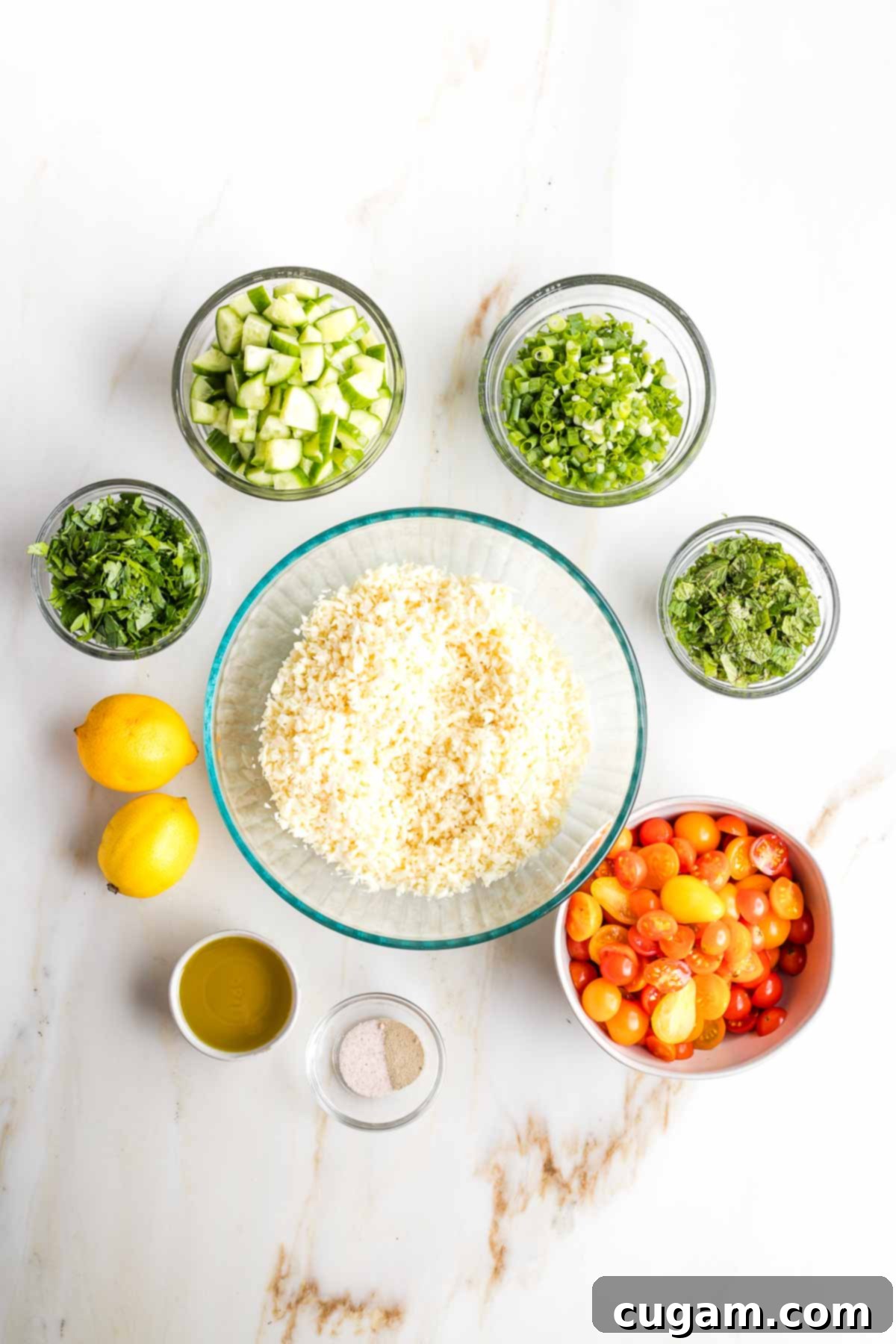
7. Combine the Salad Base: Transfer the finely riced parsnips into a large mixing bowl. To this, add all your freshly chopped ingredients: the fresh parsley, mint, diced cucumber, thinly sliced green onions, and halved tomatoes. Gently mix these vibrant ingredients together to ensure an even distribution.
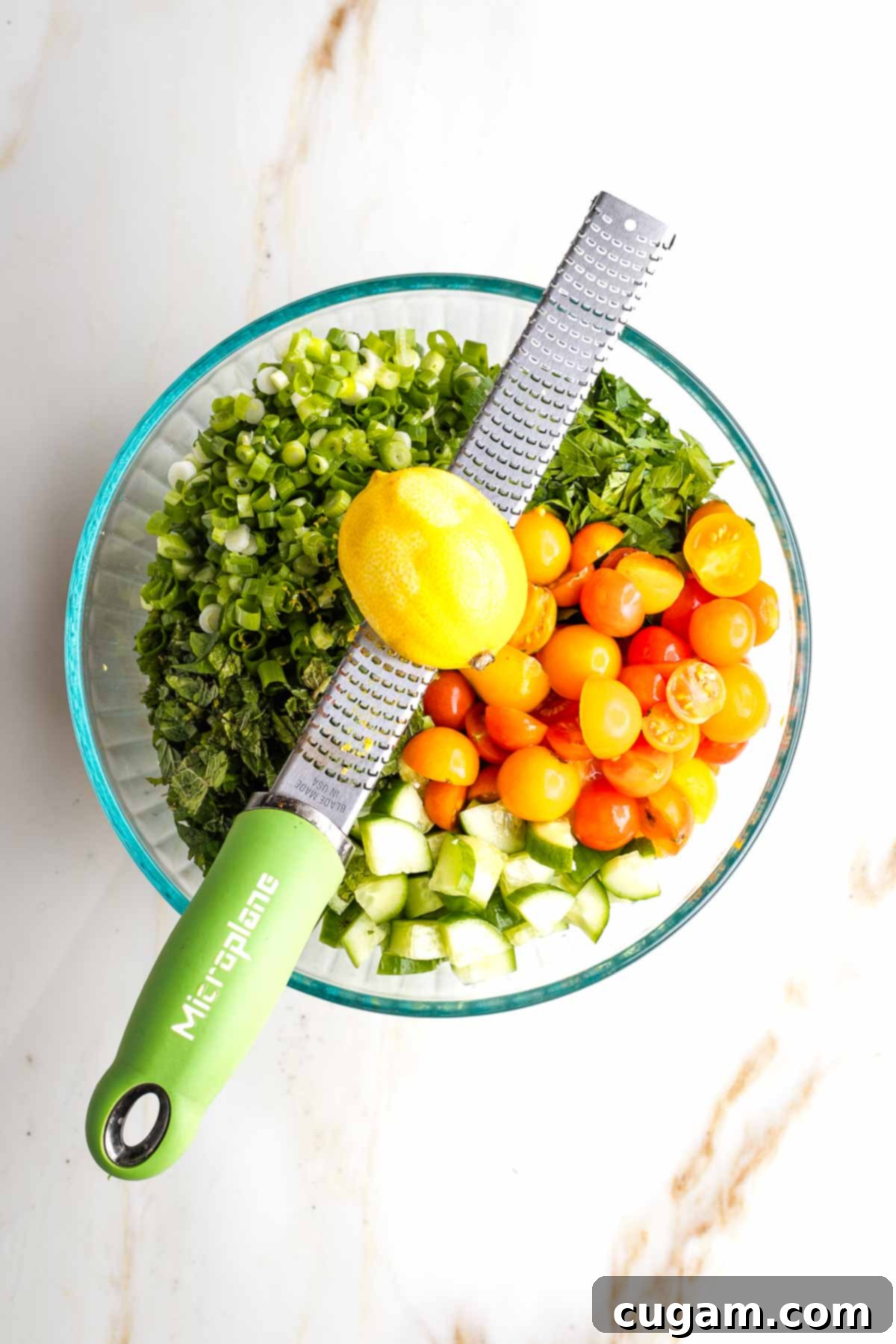
8. Dress the Salad: It’s time to add the bright, zesty dressing! First, zest the lemons directly over the bowl of chopped vegetables to release those fragrant essential oils. This step adds a burst of intense citrus flavor that simple juice alone cannot achieve.
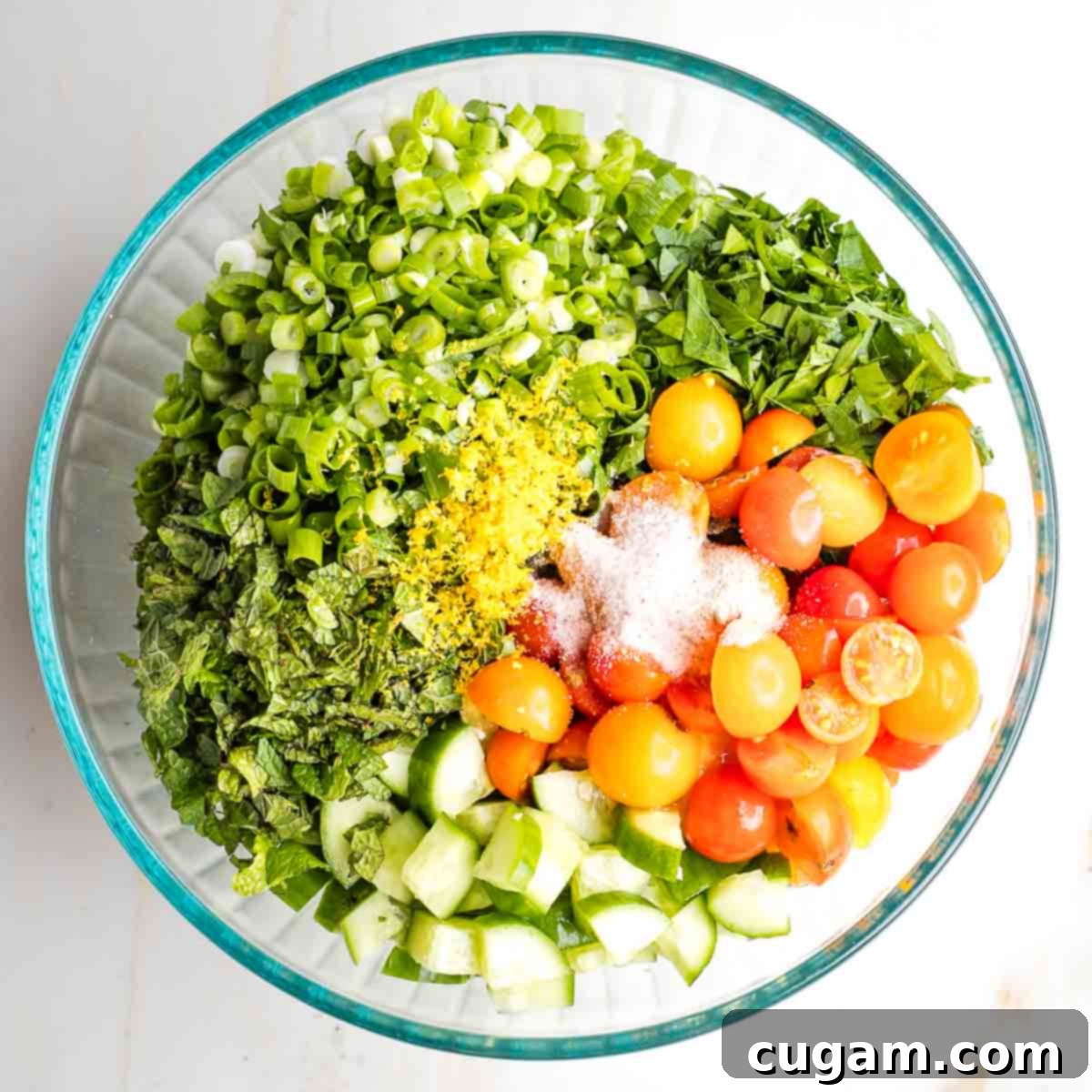
Next, sprinkle the sea salt and white pepper evenly over the veggies. Squeeze the fresh lemon juice over the mixture, ensuring it coats everything. Finally, drizzle the rich olive oil over the entire salad. The olive oil will help distribute the flavors and create a luxurious mouthfeel.
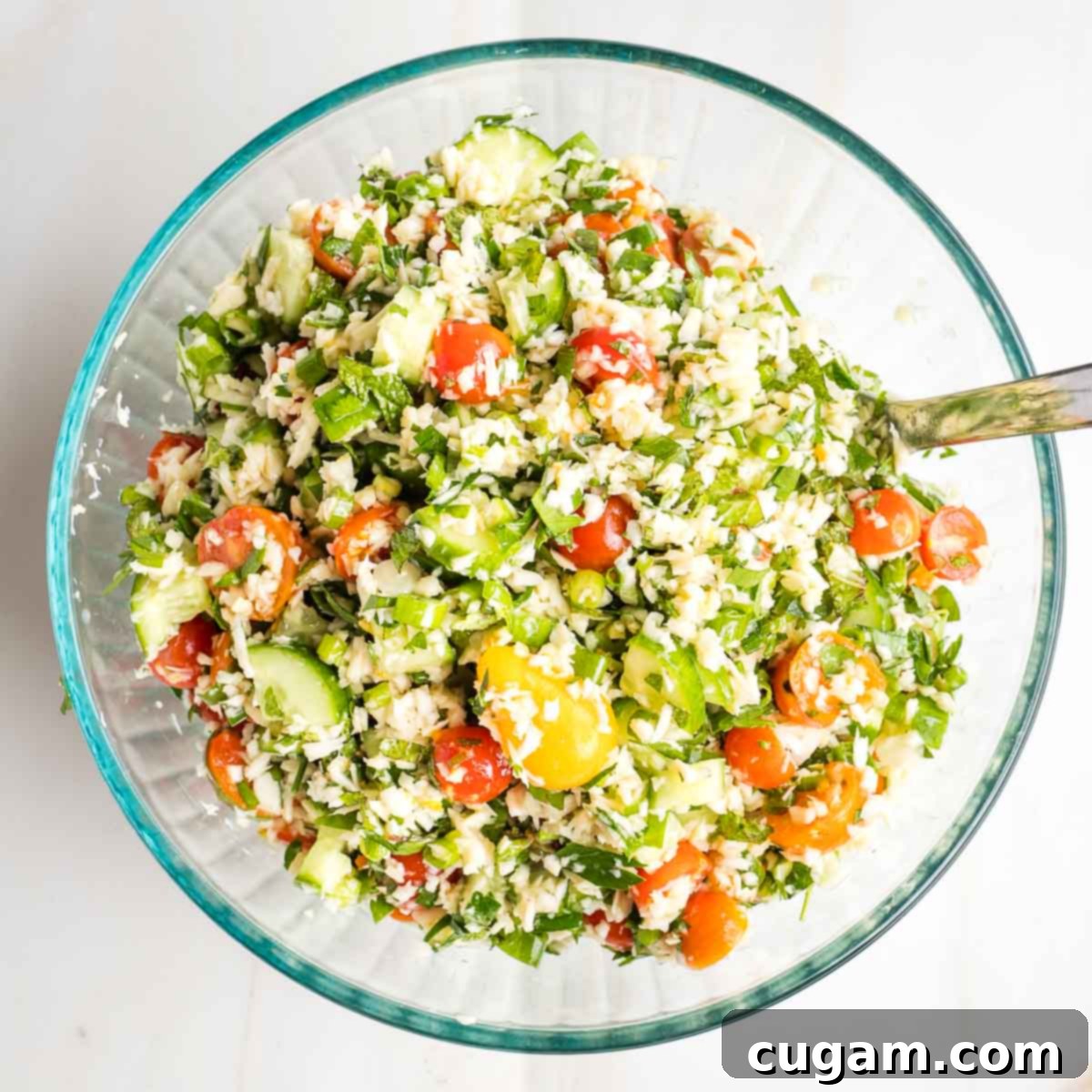
9. Mix and Serve: Using a large spoon or your hands, mix all the ingredients thoroughly until everything is well incorporated and evenly coated with the dressing. Taste the salad for seasoning, and add more salt, pepper, or lemon juice if desired, adjusting to your personal preference. For the best flavor, allow the salad to sit for at least 15-30 minutes before serving, allowing the flavors to meld beautifully. Enjoy!
Debra’s Pro Tips for the Best Gluten-Free Tabbouleh
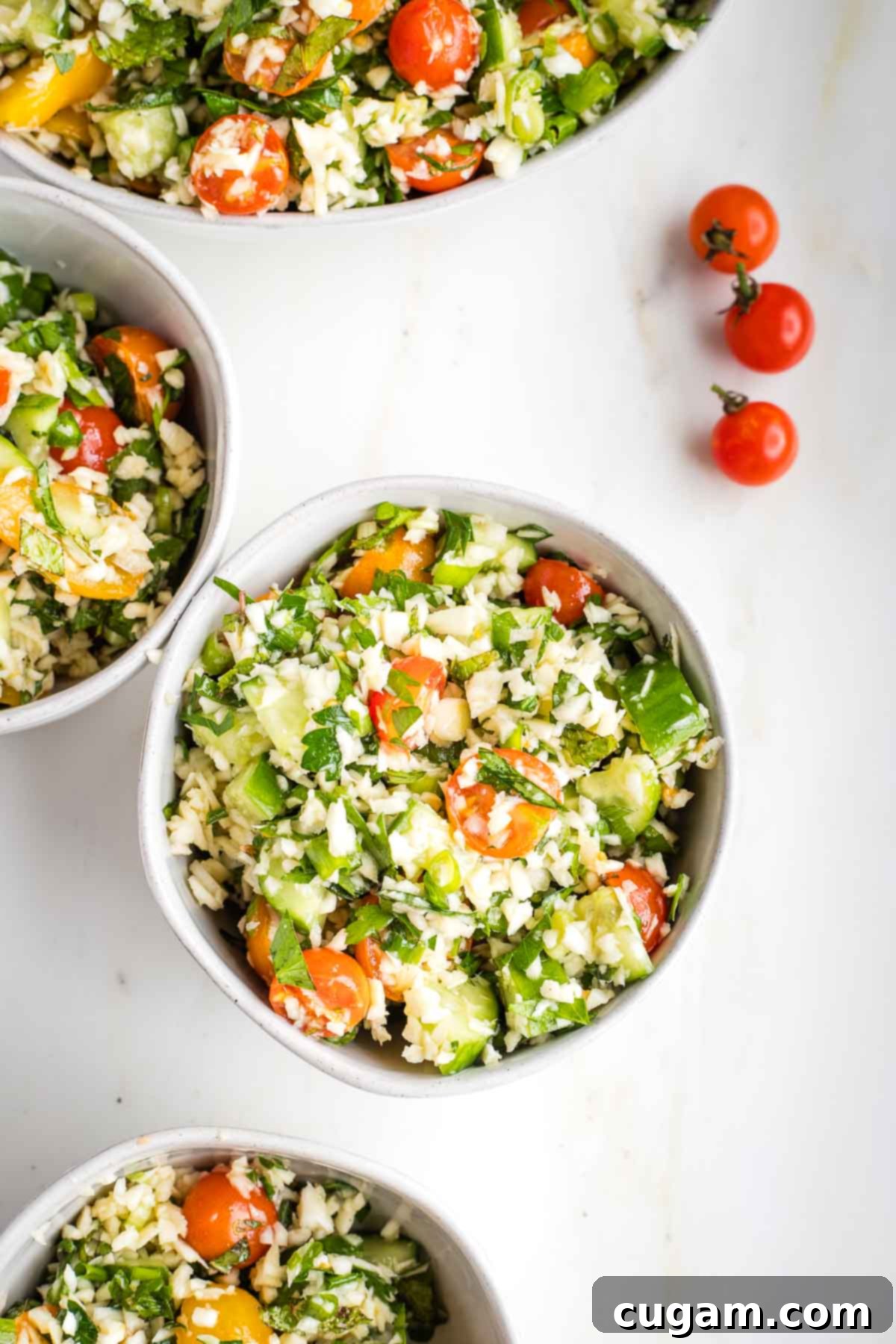
- Don’t Skimp on the Parsley: For truly authentic and fabulous fresh taste, use a generous amount of fresh parsley. It’s not just a garnish; it’s a foundational ingredient that provides the signature vibrant green color and herbaceous backbone of tabbouleh.
- Make it a Complete Meal: To transform this delicious side salad into a satisfying main course, simply add some plant-based protein. Cooked chickpeas or black beans, toasted sunflower seeds, or even a sprinkle of crumbled vegan feta cheese would make this gluten-free tabbouleh a hearty and balanced meal.
- Prepare Ahead for Enhanced Flavor: This salad truly benefits from a little resting time. Making it a few hours or even a day in advance allows all the wonderful fresh flavors to marinate and intensify, resulting in a deeper, more cohesive taste.
- Serve at Room Temperature: While it’s tempting to serve salads chilled, this grain-free tabbouleh tastes best when served at room temperature. This allows the aromas and flavors of the fresh herbs and vegetables to truly shine through.
- Smart Storage Tips: Store any leftover tabbouleh in an airtight container in the refrigerator for up to a week. However, for optimal freshness and texture, it’s best consumed within 3 days, as the cucumbers and tomatoes might start to lose some of their crispness. If you need to prepare it more than a few days in advance, consider storing the chopped tomatoes separately and adding them just before serving to prevent the salad from becoming soggy.
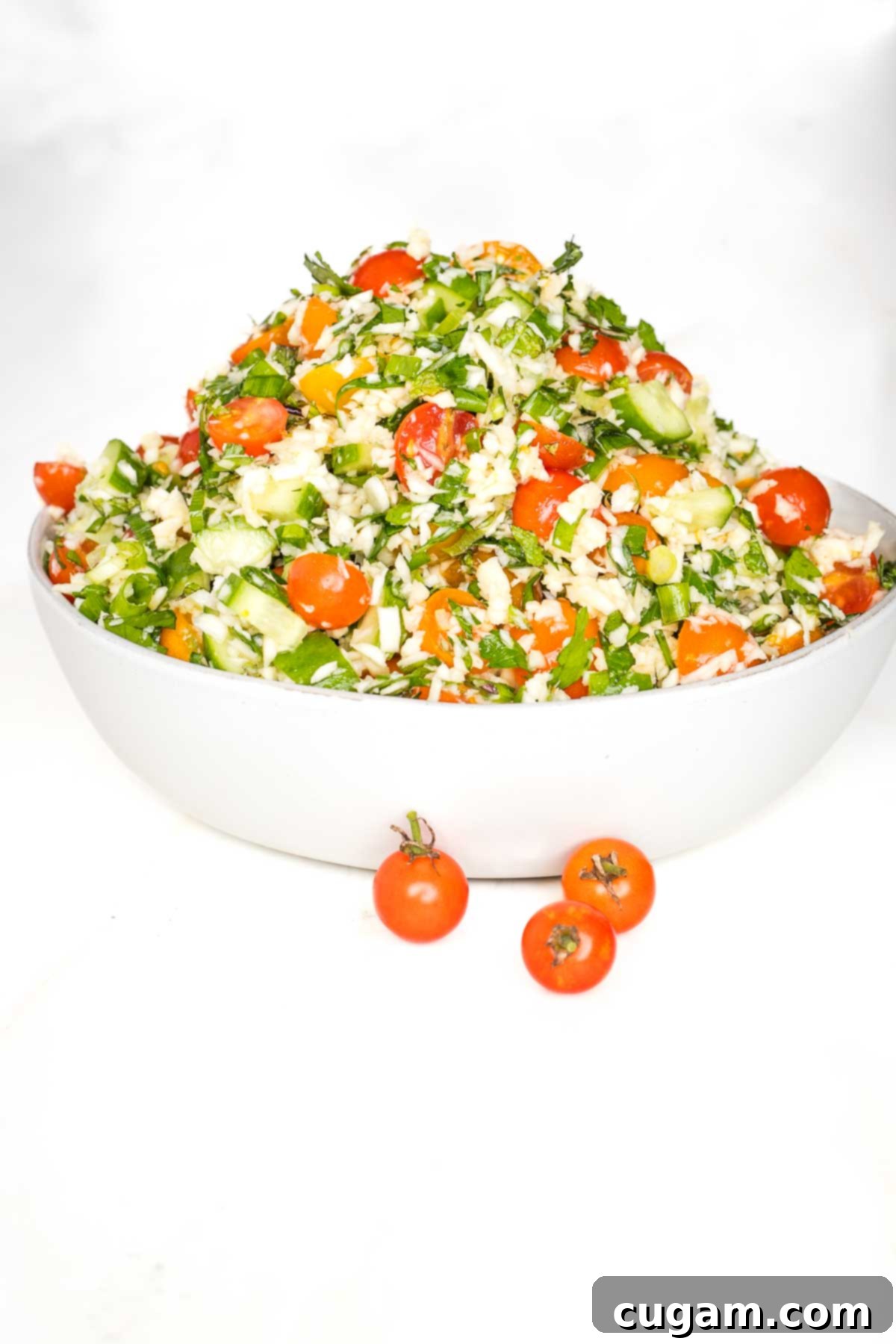
More Delightful Mediterranean Recipes to Explore
If you’ve fallen in love with the fresh, vibrant flavors of this Tabbouleh, you’ll adore these other healthy and delicious Mediterranean-inspired dishes. They pair wonderfully together or make fantastic meals on their own:
- Mediterranean Roasted Eggplant with Tahini
- Mediterranean Cauliflower Rice
- Baba Ganoush with Roasted Garlic and Tahini
- Tomato and Onion Salad with Balsamic Dressing
Did you know commenting and rating recipes is one of the best ways to support your favorite food bloggers? If you made this recipe, please consider a five star rating below and leave a comment. Also, please share your photos on instagramby tagging me @dkhealthcoach and using the hashtag #debraklein
📖 Recipe
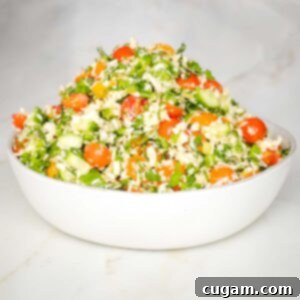
Gluten-Free Tabbouleh Salad with Parsnips
Rate this Recipe
Pin Recipe
Equipment
-
Food Processor
-
Chef’s knife
-
wooden cutting board
-
Glass Mixing Bowls with Lids
Ingredients
- 1 lb. parsnips riced
- 2 cups grape tomatoes* cut in half
- 4 mini persian cucumbers or 1 english cucumber
- 1 bunch scallions thinly sliced
- 1 cup fresh mint leaves chopped
- 1 cup flat leaf parsley leaves chopped
- 2 lemons zested and juiced
- ¼ cup olive oil
- ½ teaspoon sea salt
- ½ teaspoon white pepper
Instructions
-
Trim and peel the parsnips. Cut them into approximately 2-inch chunks and add these pieces to the bowl of a food processor that is fitted with the “S” blade. Pulse the parsnips until they are finely ground, achieving a consistency that resembles small grains, similar to bulgur wheat. Once processed, transfer the riced parsnips to a large mixing bowl.
-
Next, prepare the remaining fresh vegetables. Wash and gently pat dry the tomatoes, then cut them in half. Trim both ends of the cucumbers, slice them lengthwise into quarters, and then cut them into uniform ½-inch pieces. Thinly slice the scallions, ensuring both the white and green parts are used. Add all these prepped vegetables to the large bowl with the riced parsnips.
-
Stack the fresh mint leaves neatly and finely chop them. Discard any thick stems from the flat-leaf parsley and chop the leaves finely as well. Add both the chopped mint and parsley to the large bowl with the other ingredients, ensuring a generous amount for the best flavor.
-
To create the vibrant dressing, zest the lemons directly over the bowl of chopped veggies, releasing their aromatic oils. Then, squeeze the fresh juice from the lemons onto the vegetables. Sprinkle the sea salt and white pepper evenly over the entire mixture. Finally, drizzle the olive oil over everything. Mix until all the ingredients are thoroughly combined and evenly coated with the dressing.
-
For the most enjoyable flavor experience, this tabbouleh tastes best when served at room temperature. This salad can be conveniently stored in an airtight container in the refrigerator for up to a week. However, please note that for optimal crispness and flavor, it is best enjoyed within 3 days, as the fresh ingredients may begin to soften slightly over time.
Notes
Parsnips: If parsnips are not available or you prefer an alternative, you can easily substitute them with cauliflower rice. To do this, use one small head of cauliflower, cut it into small florets, and then pulse it in a food processor until it reaches a rice-like consistency.
Optional to make it a meal: To transform this refreshing side dish into a more substantial meal, consider adding 1 can of drained and rinsed beans (such as chickpeas or cannellini beans) and/or ½ cup of nuts or seeds (like toasted almonds, walnuts, or sunflower seeds) for added protein and healthy fats.
Nutrition
Note
The nutrition calculations were done using online tools. To obtain the most accurate representation of the nutritional information in any given recipe, you should calculate the nutritional information with the actual ingredients you used. You are ultimately responsible for ensuring that any nutritional information is accurate, complete and useful.
